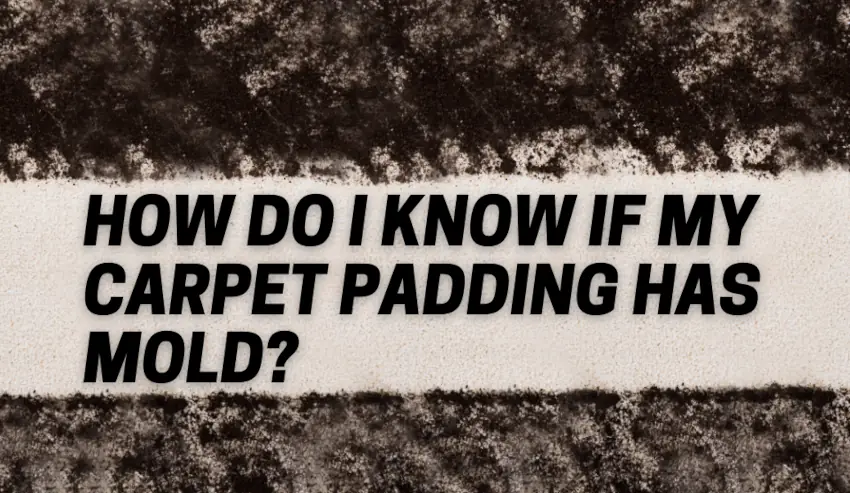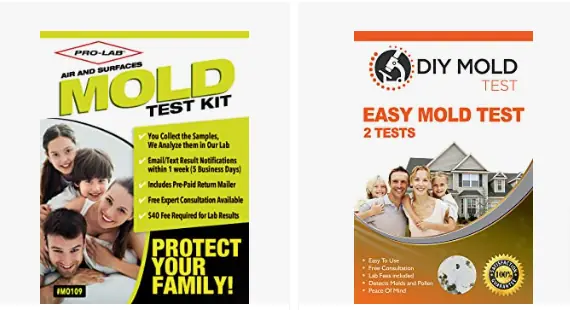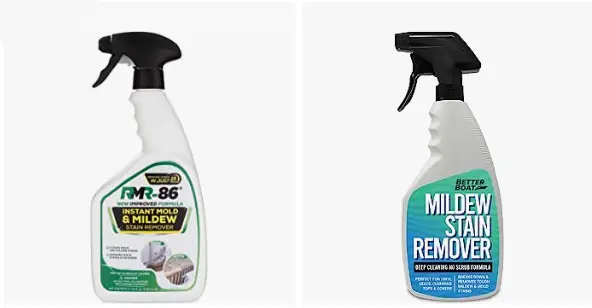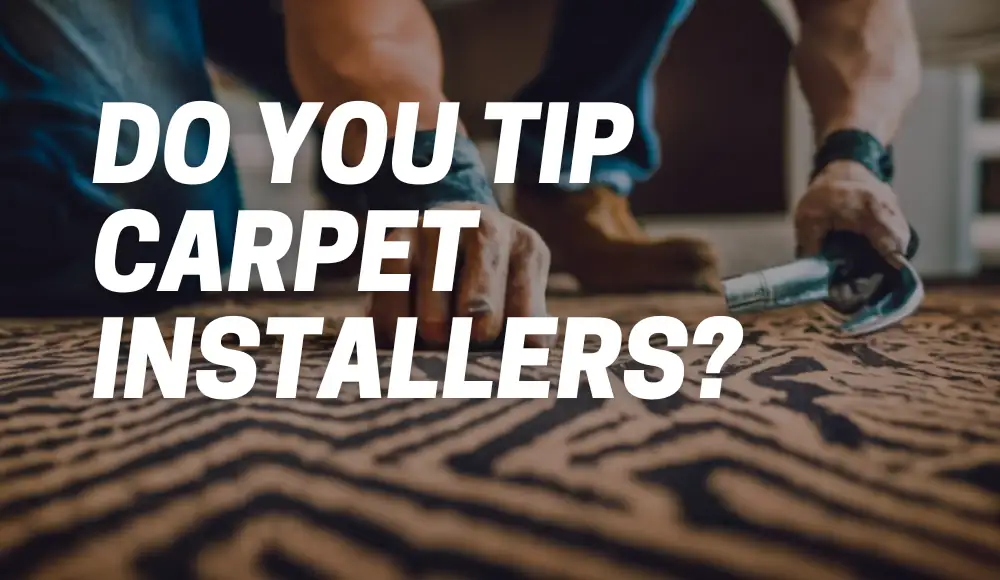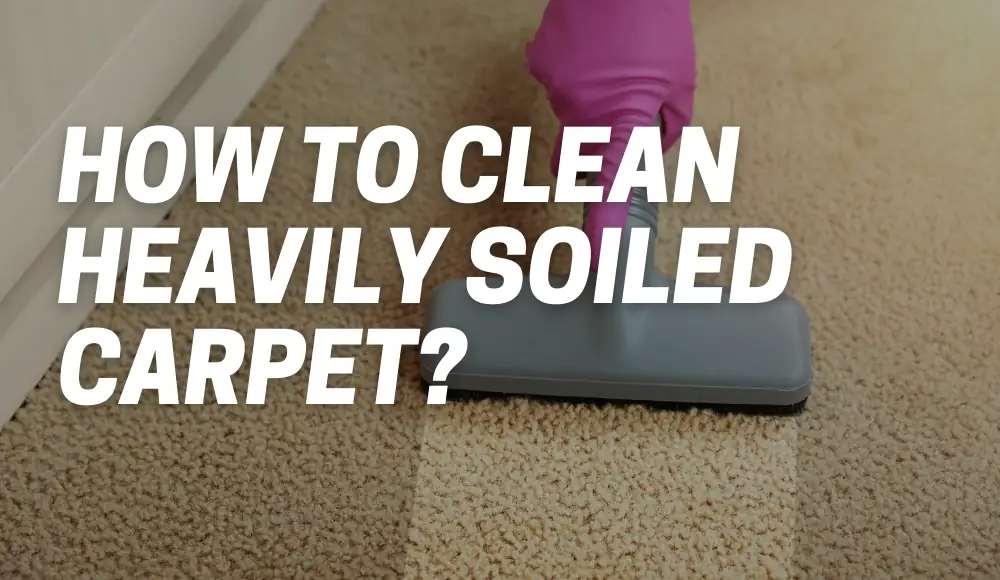If you’re a homeowner, chances are you’ve encountered some unpleasant surprises along the way. One issue that often goes undetected until it becomes a serious problem is mold in carpet padding. Mold is not only unsightly but can also pose health risks if left untreated. In this article, we will explore the signs of moldy carpet padding, its causes, and, of course, answer the question “How do I know if my carpet padding has mold?”.
So, let’s dive in and find out if your carpet padding is hiding a moldy secret!
What Does Moldy Carpet Padding Look Like?
Moldy carpet padding can have several telltale signs that indicate its presence.
First and foremost, you may notice discoloration or staining on your carpet, especially in areas that are frequently damp or have experienced water damage.
These stains can appear green, black, or brown, depending on the type of mold.
What does carpet mold look like
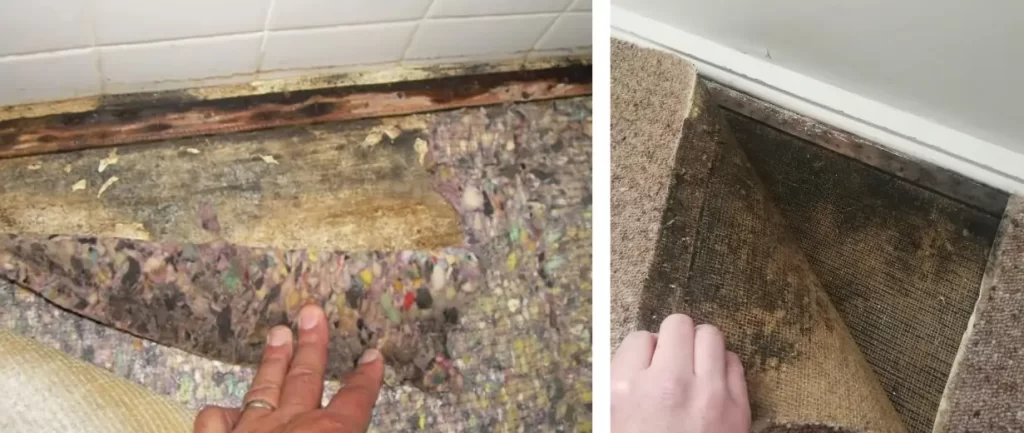
Additionally, if you see visible mold growth on the surface of your carpet or notice a musty odor in the room, it’s a strong indication that mold has infiltrated the carpet padding beneath.
Signs of Mold in Carpet Padding
If you suspect that your carpet padding has mold, there are a few signs you can look out for. The earlier you detect mold growth, the easier it is to address the problem before it becomes more serious.
Musty odor
A musty odor is one of the most common signs of mold growth in carpet padding. If you notice an unpleasant smell coming from your carpets, it’s worth investigating to determine whether or not mold is present.
Visible discoloration or staining on the carpet or padding
If there are visible signs of discoloration or staining on your carpet or padding, this could be a sign of mold growth. Mold can appear as greenish-black spots on the surface of your carpets and padding. If you notice any unusual spots or stains, it’s important to investigate further.
Increased allergy symptoms or respiratory issues
Mold can cause allergic reactions in some people, including coughing, sneezing, and wheezing. If you have noticed increased allergy symptoms or respiratory issues since installing new carpets, this could be a sign that there is mold present in your carpet padding.
It’s important to address this issue as soon as possible to protect your health.
If you notice any musty odors coming from your carpets, visible discoloration on your carpets or padding, or increased allergy symptoms and respiratory issues after installing new carpets then these are all signs that there may be mold growing in your carpet pads which require immediate attention.
Is Mold Under Carpet Normal?
While it’s not uncommon for mold to grow in damp or humid environments, finding mold under your carpet is not considered normal or healthy.
Mold needs moisture and a food source to thrive, and carpet padding provides the ideal environment for mold growth if it gets wet and doesn’t dry properly.
If you discover mold under your carpet, it’s crucial to take immediate action to prevent further damage and potential health issues.
How Does Mold on Carpet Start?
Mold growth on carpet typically begins with excessive moisture.
This moisture can originate from various sources, such as water leaks, floods, high humidity, or spills that aren’t promptly and thoroughly dried.
If your carpet padding becomes wet and remains damp for an extended period, it creates the perfect breeding ground for mold spores to take hold and multiply.
Once mold establishes a presence, it can spread rapidly, compromising the structural integrity of your carpet and potentially affecting the air quality in your home.
What Does Mold Under Carpet Smell Like?
If you suspect mold under your carpet, one of the easiest ways to identify its presence is through smell.
Mold emits a distinct musty odor that can permeate the air in the affected area. This smell is often described as damp, earthy, or stale. If you notice an unpleasant and persistent odor, especially when you enter a particular room or area with carpeting, it’s essential to investigate further and address any potential mold issues promptly.
Does Moldy Carpet Smell Go Away?
Unfortunately, the musty odor caused by mold in carpet is unlikely to disappear on its own.
Mold spores are resilient and can continue to release odorous compounds even if the visible signs of mold growth are eliminated.
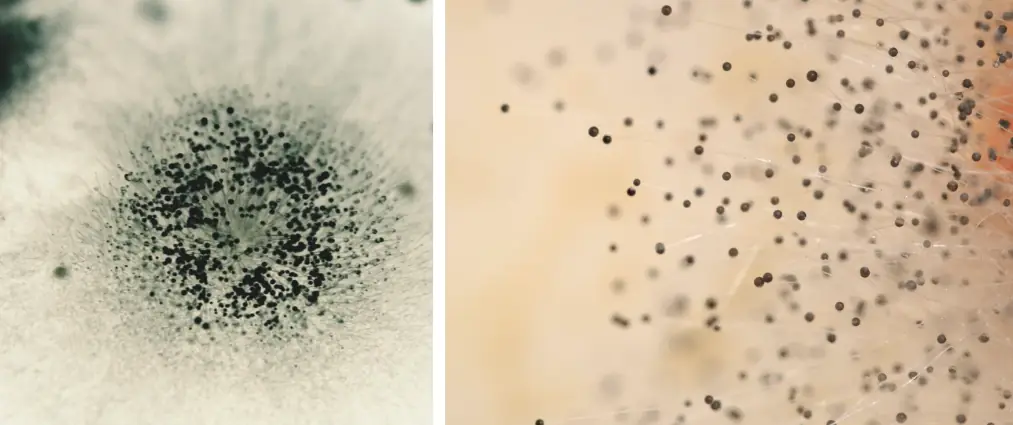
Simply masking the smell with air fresheners or deodorizers won’t solve the underlying problem. To eliminate the odor permanently, you must address the source of the mold and ensure effective remediation to prevent its recurrence.
Can Black Mold Live Under Carpet?
Black mold, also known as Stachybotrys chartarum, is a particularly concerning type of mold due to its potential health risks.
While black mold is not exclusive to carpeted areas, it can certainly take hold under carpets, including padding.
What are the black spots under carpet padding?
The dark, damp environment created by carpeting provides an ideal breeding ground for black mold. If you suspect black mold under your carpet, it’s crucial to address the issue promptly and seek professional assistance to ensure safe and thorough removal.
How Long Does Wet Carpet Take to Grow Mold?
The timeline for mold growth on wet carpet can vary depending on several factors, including the level of moisture, temperature, and the type of mold spores present.
In ideal conditions, mold can begin to grow within 24 to 48 hours after the carpet becomes wet. Therefore, it’s crucial to act swiftly in drying out wet carpets and addressing any potential moisture sources to prevent mold from taking hold and spreading further.
How Do You Check Under Carpet?
Checking under the carpet for mold requires a systematic approach to ensure a thorough examination.
Here’s a step-by-step guide to help you:
- Prepare the area: Remove any furniture or obstacles from the carpeted area to allow easy access for inspection.
- Lift the carpet: Start by lifting a corner of the carpet, using a flat tool like a putty knife or a spatula. Gently pry the carpet away from the tack strip that holds it in place, being careful not to damage the carpet or yourself.
- Inspect the carpet padding: Once you have lifted the carpet, examine the underlying padding for any signs of discoloration, staining, or visible mold growth. Take note of any areas that appear wet or damp.
- Check for odor: As mentioned earlier, mold often emits a distinct musty smell. If you detect an unpleasant odor, it’s an indication that further investigation is warranted.
- Document your findings: If you discover mold or signs of moisture, take photographs or make detailed notes to provide evidence for professional remediation or insurance purposes.
How to lift carpet to check for mold
—
Carpet Mold Testing Kits
If you suspect mold under your carpet but want confirmation, you may consider using a carpet mold testing kit.
These kits are readily available and can help identify the presence of mold spores in your carpet and surrounding areas. While they provide some level of insight, it’s important to note that professional mold testing and remediation are highly recommended for accurate and thorough results, especially when dealing with potential health risks.
Will Carpet Padding Eventually Dry?
In most cases, carpet padding can dry out if the underlying moisture source is adequately addressed, and the environment is kept dry and well-ventilated.
However, it’s crucial to act promptly in drying wet carpet padding to prevent mold growth. If the padding remains wet for an extended period, it may lose its structural integrity, become a breeding ground for mold, and require replacement.
Can You Get Mold Out of Carpet Padding?
Removing mold from carpet padding can be a challenging task, especially if the infestation is severe or widespread.
In many cases, it’s more effective and safer to remove and replace the affected carpet padding rather than attempting to clean it. Mold remediation professionals have the expertise and proper equipment to safely remove mold, sanitize the area, and minimize the risk of cross-contamination.
If you encounter mold in your carpet padding, consulting a professional is the best course of action for a thorough and successful remediation process.
What Kills Mold in Carpet Padding?
To effectively kill mold in carpet padding, you’ll need to use a combination of techniques and cleaning solutions.
Here’s what you can do to eliminate mold in carpet padding:
- Vinegar: Distilled white vinegar is an affordable and natural option. Fill a spray bottle with undiluted vinegar and generously spray the affected area. Allow it to sit for about an hour before scrubbing and rinsing with clean water.
- Borax: Borax is a mineral compound that can effectively kill mold. Mix one cup of borax with one gallon of water to create a solution. Apply the solution to the moldy carpet padding, scrub gently, and let it dry. Vacuum up any remaining borax residue.
- Hydrogen peroxide: Hydrogen peroxide is a powerful antifungal agent. Use a 3% hydrogen peroxide solution, available at most drugstores. Apply it directly to the moldy carpet padding, let it sit for 10-15 minutes, and then scrub and rinse with clean water.
- Commercial mold-killing products: These are specifically designed for carpets or similar areas.
What is the Fastest Way to Get Mold Out of Carpet?
When it comes to removing mold from carpet, it’s crucial to take immediate action to prevent its spread and minimize health risks.
Here are the steps to help you get mold out of the carpet as quickly and effectively as possible:
How to get rid of carpet mold
- Safety first: Before starting the cleaning process, ensure proper ventilation in the area by opening windows or using fans. Additionally, wear protective gloves, a mask, and goggles to minimize exposure to mold spores.
- Containment: To prevent the spread of mold spores to unaffected areas, isolate the contaminated carpet. You can do this by placing plastic sheeting or tarps around the affected area, sealing it off with tape.
- Dry the area: Use a wet/dry vacuum or a carpet extractor to remove as much moisture as possible from the carpet. This step is crucial to halt further mold growth. Ensure thorough extraction by going over the carpet multiple times.
- Prepare a cleaning solution: Mix a solution of mild detergent and warm water. Avoid using bleach, as it can damage the carpet fibers and may not effectively kill all types of mold.
- Test an inconspicuous area: Before applying the cleaning solution to the entire carpet, test it on a small, inconspicuous area to ensure it doesn’t cause any discoloration or damage.
- Scrub the affected area: Dip a clean cloth or sponge into the cleaning solution and gently scrub the moldy spots on the carpet. Be sure to work in a circular motion and focus on the affected areas.
- Rinse with clean water: After scrubbing, rinse the area with clean water to remove any remaining detergent or mold spores. You can use a spray bottle or a clean cloth dampened with water.
- Dry thoroughly: Use fans, dehumidifiers, or open windows to facilitate drying. It’s crucial to eliminate all moisture from the carpet and prevent further mold growth. Monitor the area for several days to ensure it is completely dry.
- Dispose of cleaning materials: Properly dispose of any cleaning materials, sponges, or cloths that came into contact with mold spores to prevent cross-contamination.
- Monitor for reoccurrence: Keep an eye on the cleaned area and regularly inspect for any signs of mold regrowth. If mold reappears or the problem persists, it’s advisable to seek professional assistance for thorough remediation.
Remember, mold remediation can be a complex process, and depending on the severity of the mold infestation, it may be best to consult professionals who specialize in mold removal to ensure a safe and effective outcome.
FAQs
Can Mold Under Carpet Make You Sick?
Yes, mold under carpet can pose health risks, especially for individuals with allergies, asthma, or weakened immune systems.
Mold spores can become airborne and cause respiratory issues, such as coughing, sneezing, congestion, and even allergic reactions. Prolonged exposure to mold can also lead to more severe health problems.
If you suspect mold under your carpet and experience unexplained health symptoms, consult a healthcare professional.
Is It Bad to Sleep in a Room with Moldy Carpet?
Sleeping in a room with moldy carpet is not recommended, as it can negatively impact your health and well-being.
The musty odor emitted by mold can disrupt your sleep and lead to respiratory issues, allergic reactions, or worsen existing conditions such as asthma. It’s essential to address mold issues promptly and ensure a clean and healthy environment for quality sleep.
Conclusion
Moldy carpet padding is a problem that requires immediate attention. By recognizing the signs of mold, understanding its causes, and taking appropriate measures, you can effectively address this issue.
Remember, mold remediation should be handled by professionals to ensure proper removal and prevent further contamination. Your health and the well-being of your home are worth the effort to maintain a mold-free environment.
